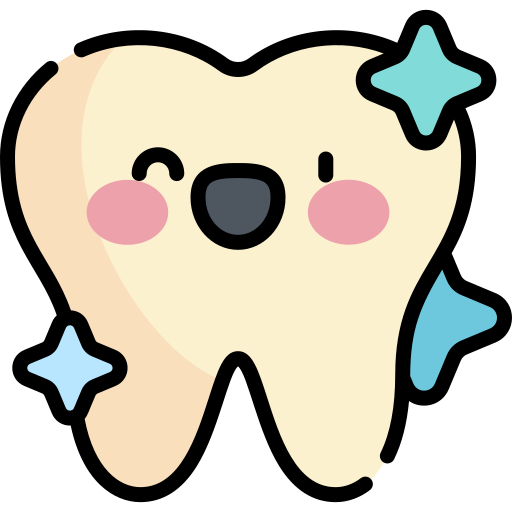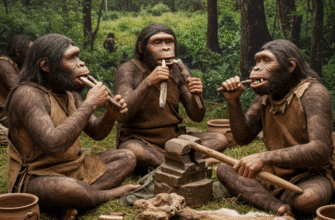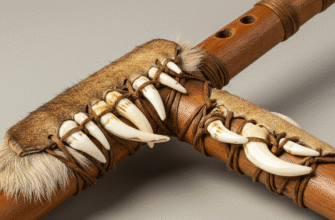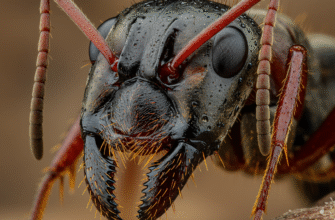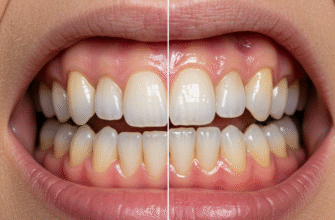The gleaming white teeth of a wild predator, perfectly evolved for tearing and gripping, often stand in stark contrast to the dental challenges faced by our beloved pets. It’s a fascinating divergence, this tale of two mouths, shaped by vastly different environments, diets, and evolutionary pressures. One lives by the raw rules of nature, the other under the often-pampering, sometimes problematic, influence of human companionship. Exploring these differences not only sheds light on animal physiology but also offers insights into how we can better care for the animals sharing our homes.
The Wild Grin: Nature’s Dental Plan
In the untamed world, an animal’s survival is inextricably linked to its physical capabilities, and strong, healthy teeth are paramount, especially for predators and even many herbivores. The very act of eating for most wild animals is a dental workout. Carnivores, for instance, don’t just consume soft meat; they tear through tough hides, crunch on bones, and shear through sinew. This isn’t just about sustenance; it’s nature’s toothbrush and floss, vigorously scrubbing tooth surfaces and stimulating gums. Think of a wolf pack taking down an elk – the process of consuming the carcass involves a remarkable amount of dental work that keeps their teeth relatively clean and their jaw muscles powerful.
Herbivores, too, face their own dental regimen. Grazers and browsers spend hours each day grinding down fibrous plant matter, grasses laden with abrasive silica, and tough bark. This constant grinding action, while wearing down teeth over time, also keeps them functional by preventing excessive overgrowth in species with continuously growing teeth (like rodents and rabbits) and by clearing away softer food residues from the surfaces of others. The mechanical stress involved in processing these tough foodstuffs is crucial for maintaining a healthy oral environment.
Natural selection plays a ruthless yet effective role. An animal in the wild with a severe toothache, a broken jaw, or debilitating periodontal disease will struggle to hunt or forage effectively. It will weaken, become more susceptible to predation, and be less likely to reproduce. Consequently, genes predisposing animals to poor dental health are less likely to be passed on. This relentless pressure ensures that, by and large, wild populations maintain a baseline of dental robustness suited to their specific ecological niche.
However, this doesn’t mean wild animals are immune to dental problems. Injuries are common – teeth can break during hunts, fights over territory or mates, or even when chewing on unexpectedly hard objects. Wear and tear is a natural consequence of a long life using teeth on abrasive materials. Infections can occur, especially if a tooth is fractured, exposing the pulp. Abscesses are not unheard of. The key difference is the absence of veterinary intervention; these animals must endure, or succumb to, their dental ailments.
The Domesticated Mouth: A Softer Story
Turn the page to our domesticated companions, and the dental narrative shifts dramatically. While loved and cared for, their oral health often presents a different set of challenges, largely stemming from a lifestyle far removed from their wild ancestors. The most significant factor is diet. Modern pet foods, particularly dry kibbles and soft canned varieties, are a world away from the raw, abrasive diet of the wild. Kibble, despite some claims, often shatters easily and may not provide the comprehensive cleaning action of, say, a hyena gnawing on a femur. Soft foods offer virtually no mechanical cleaning.
Furthermore, many commercial pet foods contain carbohydrates and sugars that can contribute to plaque formation, much like in humans. While cavities (caries) are less common in dogs than humans due to differences in saliva pH and oral bacteria, they are not unheard of, especially with diets high in fermentable carbohydrates. Cats, being obligate carnivores, are even less prone to cavities in the human sense, but they face their own unique and painful condition: tooth resorption, where the tooth structure itself is eroded away.
Genetics also play a substantial role. Over centuries, humans have selectively bred animals for specific appearances or temperaments, often with little regard for dental architecture. Brachycephalic (short-nosed) breeds like Pugs, Bulldogs, and Persian cats, for example, often have crowded, misaligned teeth due to their shortened jaws. This overcrowding creates nooks and crannies where food particles and bacteria can easily accumulate, predisposing them to periodontal disease. Unlike natural selection, which weeds out poor dental traits, artificial selection can inadvertently perpetuate them.
Increased longevity, a testament to better overall care and nutrition, ironically gives dental diseases more time to develop and progress. Periodontal disease – an inflammation and infection of the tissues surrounding the teeth – is incredibly prevalent in adult dogs and cats. It starts as gingivitis (inflamed gums) and, if left unaddressed, can progress to periodontitis, leading to pain, tooth loss, and even systemic health issues as bacteria enter the bloodstream.
It is crucial to recognize that bad breath in a pet is not normal or just “doggy breath.” It is often the first and most noticeable sign of underlying dental problems, typically periodontal disease. Prompt attention can prevent pain and more severe health consequences down the line for our companions.
Diet: The Decisive Factor in Dental Fortitude
The chasm in dental health between wild and domestic animals can largely be bridged by understanding the profound impact of diet. For wild animals, every meal is a dental hygiene session. The tearing, ripping, and crushing of raw, unprocessed food provides a natural scouring action. Bones, hide, and fibrous plant materials are nature’s dental floss and toothbrush. This constant mechanical cleaning minimizes plaque accumulation, the sticky film of bacteria that is the precursor to tartar and gum disease.
In contrast, many domesticated animals consume diets that are soft, processed, and sometimes laden with ingredients that wild animals would never encounter. Even hard kibble, often touted for its dental benefits, may not offer the comprehensive cleaning effect that a more natural, abrasive diet would. The texture often leads to it shattering on impact rather than providing a scraping action along the tooth surface down to the gumline. Wet foods, while beneficial for hydration, offer little to no mechanical cleaning.
This dietary difference isn’t just about texture; it’s also about composition. Wild diets are typically low in the kinds of refined carbohydrates and sugars that can fuel the growth of plaque-forming bacteria in the mouth. While domestic pet food formulations have improved immensely, the fundamental difference in food processing and form remains a key factor in the prevalence of dental issues in pets.
Wildlife biologists and veterinarians have observed that wild canids and felids that scavenge or hunt whole prey exhibit significantly less tartar buildup compared to their domestic counterparts fed commercial diets. The physical act of consuming a carcass, including skin, fur, and bones, offers a full-mouth cleaning experience. This is a consistent finding across various species in their natural habitats.
Nurturing Healthy Smiles in Our Companions
Given the altered lifestyles of our domestic animals, their dental health becomes a shared responsibility. While they may not benefit from the “tough love” of a wild diet, there are numerous ways conscientious owners can help maintain their pets’ oral hygiene and prevent painful dental conditions. Understanding these can make a world of difference to their comfort and overall wellbeing.
One of the foundational aspects is, unsurprisingly, diet, but with a nuanced understanding. While completely replicating a wild diet is impractical or even ill-advised for many pets without expert guidance, considering the textural properties of food can be beneficial. Some veterinary dental diets are specifically designed with a kibble size, shape, and texture that encourages chewing and creates a scrubbing effect on the teeth. It’s less about “kibble vs. wet” in absolute terms and more about what any given food offers in terms of mechanical cleaning potential, alongside its nutritional completeness.
Beyond the main meals, dental chews and toys play a vital role. These items are designed to encourage gnawing and chewing, actions that help scrape away plaque. The key is selecting chews that are safe and appropriate for the animal’s size and chewing strength. Items that are too hard can risk tooth fractures, while those that are too soft or small may be swallowed whole or offer little cleaning benefit. Variety and rotation can also keep a pet engaged.
Proactive Dental Care at Home
Perhaps the gold standard for at-home dental care, though sometimes challenging, is regular tooth brushing. Using a pet-specific toothpaste (human toothpaste is not safe for pets) and a soft-bristled brush, owners can manually remove plaque before it mineralizes into hard tartar. Introducing this practice slowly and positively from a young age can make it a manageable, even enjoyable, routine for some pets.
- Start slowly: Let your pet get used to you handling their mouth.
- Use pet-safe toothpaste: These often come in palatable flavors like poultry or malt.
- Be gentle: Focus on the outer surfaces of the teeth where plaque accumulates most.
- Aim for consistency: Even a few times a week is better than not at all.
Finally, regular veterinary check-ups are indispensable. A veterinarian can assess your pet’s oral health, identify early signs of trouble, and recommend professional cleanings (prophylaxis) under anesthesia when necessary. These professional cleanings are far more thorough than at-home brushing, allowing for scaling below the gumline and polishing of the teeth, which are crucial for managing and preventing periodontal disease.
A Tale of Two Environments
The dental health of wild animals versus their domesticated counterparts paints a clear picture of how environment, diet, and evolutionary pressures shape biological outcomes. Wild animals, through the rigors of their natural diet and the unyielding force of natural selection, often maintain a degree of dental fortitude that is intrinsically linked to their survival. They face their own dental battles, but their toolkit is forged in the wild.
Domesticated animals, on the other hand, live in a world of our making. Their softer diets, altered genetics from selective breeding, and longer lifespans create a different set of dental vulnerabilities. Yet, they also benefit from our capacity for care, with access to veterinary science and dedicated owners willing to invest in their oral hygiene. Ultimately, understanding these contrasts doesn’t just satisfy our curiosity about the natural world; it empowers us to be better custodians of the health and happiness of the animals that share our lives, ensuring their smiles, whether wild or wonderfully familiar, remain as healthy as possible.
